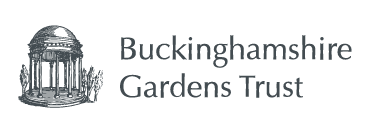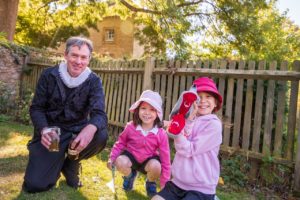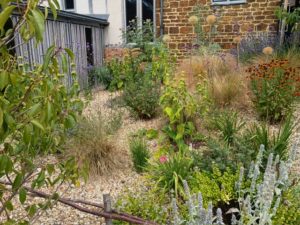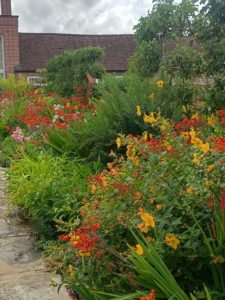John Nash and the Dovecote
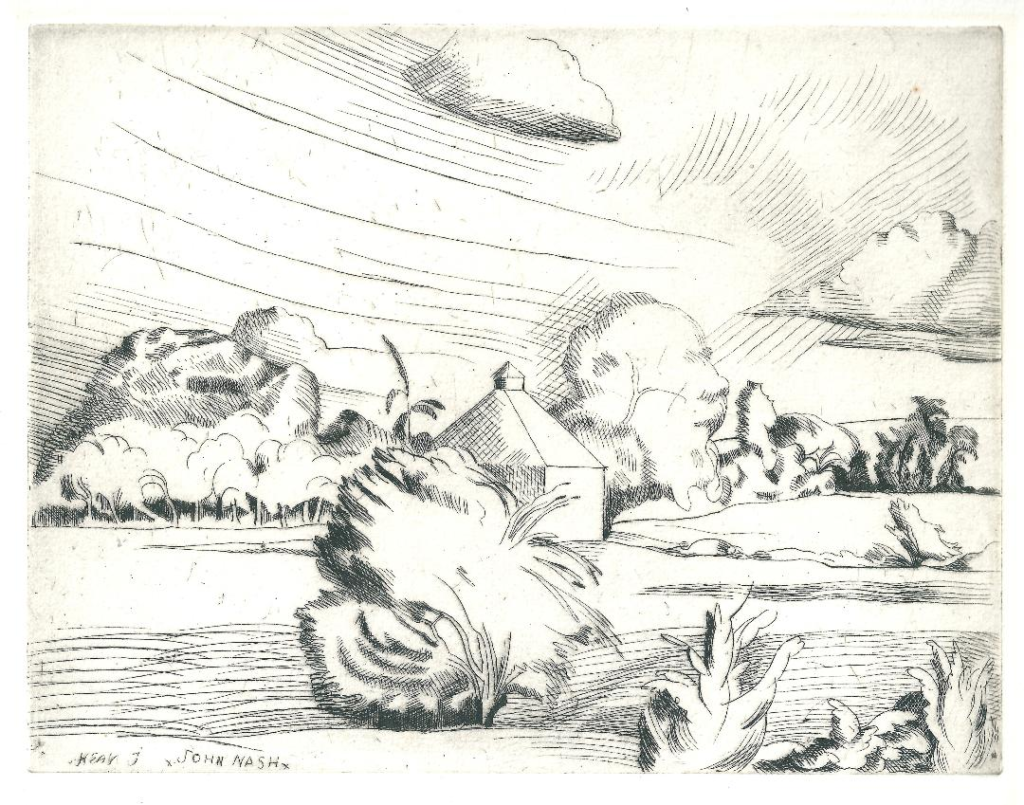
Over the last year, we have all developed an increasing appreciation of our open spaces ranging from public parks, designed landscapes or rural countryside. They are places where we have enjoyed the beauty of nature, found comfort away from these difficult times and exercised our minds and our bodies.
A century ago, in the years following the First World War, a similar situation was happening as many people needed escape from the horrors of war and sought out the peaceful and idyllic rural England that they had fought to protect. One of those was the artist, John Nash, who had experienced war at first hand serving at the Battles of Passchendaele and Cambrai. With his wife Christine Kühlenthal, they stayed in Whiteleaf at the Red Lion Pub and ‘The Other Cottage’ the home of fellow artist, Francis Unwin. In 1921 they moved to ‘Haven Cottage’ in Monks Risborough before settling at ‘Lane End’ in Meadle where they lived for 20 years. Nash’s output during this period captured the beauty of the area, particularly the woods around Whiteleaf, his garden and the landscape around his Meadle home.
Nash and his contemporaries have been the subject of increasing interest in recent years and the Towner Art Gallery in Eastbourne is currently hosting an exhibition on John Nash to accompany the wonderful biography ‘John Nash: The Landscape of Love and Solace’ by Andy Friend.[1]
John Nash is of great interest to the Bucks Gardens Trust as part of our ‘Artists and Their Gardens’ project. Claire De Carle has written a report on the Nash’s childhood home, Wood Lane House in Gerrards Cross. I am now researching John’s years at Meadle and, as part of my research, I was asked by Andy Friend to help identify a previously unknown work by Nash which Andy believed to be from this area. Can you imagine how exciting it was to see the Dovecote which sits in the middle of St Dunstan’s Park (formerly Place Farm) in Monks Risborough?
The Dovecote would have sat at the heart of Place Farm when Nash drew it. Nash would have been very familiar with Place Farm as it was just down the lane from Haven Cottage so it is curious that there are not further works representing it. The etching of ‘The Dovecote’ has been published in ‘John Nash; Newly Discovered Engraving & Drawings’[2] by Jeremy Greenwood who notes that Nash and Francis Unwin clearly worked together and learned from each other. Greenwood references Unwin’s catalogue of works which included a white line woodcut entitled ‘Place Farm, Monks Risborough (1923?)’ described as ‘Place Farm under the influence of Mr John Nash who attempted to etch the same subject under the influence of Unwin’[3]
The Dovecote In Detail
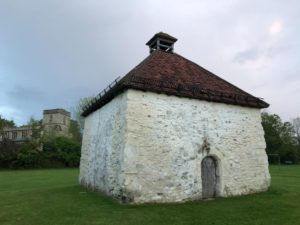
It is thought that the square dovecote was built during the 16th century. Dovecotes were used to house pigeons kept for food during the Summer and Autumn and the existence of such a structure denotes a religious or secular house of high status.[4] It is listed Grade II* and Historic England details its construction from “coursed rubble clunch with some flint and tile. Large dressed stone blocks at quoins. Pyramid tile roof, central timber entry turret with similar roof”[5]
On the northwest elevation, there is a doorway under a chamfered semi-circular arch made from clunch which once had decorated carvings. It has been speculated that the door might have been a later addition or from an earlier structure on the site. We cannot be exactly sure of what other structures were on site when the Dovecote was originally constructed but, by the 19th century, it sat alongside a farmhouse and assorted agricultural barns which formed Place Farm. However, all these buildings were demolished in the 1960s and only the Dovecote remains. In the mid-twentieth century a large opening had been made on the east elevation, probably for cart storage, but this was later filled in with Purbeck limestone. In 2015, a condition survey was carried out and the dovecote was returned to its historic appearance with limewash which helps protect the stonework.
As for John and Christine Nash, they moved to the Essex/Sussex border in 1944 however, if you look carefully you might find the grave of John’s sister, Barbara in the churchyard at St. Dunstans.
The etching is currently on show as part of the above exhibition – https://www.townereastbourne.org.uk/exhibition/john-nash-the-landscape-of-love-and-solace/
Place Farm; – If you are interested in a fuller history of the site, please look out for my article in our next edition or visit our website where you can find the full article.
Jo Mirzoeff
With thanks to Andy Friend, Jeremy Greenwood, Simon Hilton, the Estate of John Nash, Geoff Huntingford and the Princes Risborough Heritage Society
[1] Friend, Andy, ‘John Nash: The Landscape of Love and Solace’ Thames and Hudson, 2020
[2] Greenwood, Jeremy, ‘John Nash; Newly Discovered Engraving & Drawings’, Jeremy Greenwood, 2020
[3] Cat No. 83 ‘Catalogue of the engraved work of F.S. Unwin’, Print Collector’s Quarterly, Campbell Dodgson, January, 1934. As referenced in Greenwood pg. 8
[4] Huntingford, G ‘Dovecote, Monks Risborough, Buckinghamshire’ (De Montfort University, 1997/8)
[5] https://historicengland.org.uk/listing/the-list/list-entry/1125788
